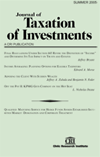Reading Financial Statements for Better Investment Decisions
Author: Marilyn E. Vito.; Gurprit Chhatwal.; Francis Thomas.
Source: Volume 24, Number 02, Winter 2007 , pp.117-130(14)

< previous article |next article > |return to table of contents
Abstract:
Determining the underlying value of a stock is of paramount importance when making investment decisions. Should an investor accept or reject a potential investment or should an investor continue to hold a current investment? Underlying value (sometimes called intrinsic value, investment value, or fair value) is determined by three variables: future returns, forecasted risk, and anticipated growth. The intrinsic value is the standard to which we compare the current market price to assess the extent to which a security is over-, under- or fair-valued. Knowledge gained by understanding the financial statements and reading the Management Discussion & Analysis (MD & A) can prove to be invaluable in evaluating a firm’s intrinsic value and making better investment decisions. The objective of this study is to help investors gain an insight into a company’s future directions, profitability, strengths, weaknesses, and risks, which should lead to a more informed investment decision. An in-depth analysis of financial statements is the recommended approach to informed investing. This study focuses on the significance of cash flows to be considered during that process and highlights ways in which investors can analyze cash flows and assess risk.Keywords:
Affiliations:
1: Richard Stockton College of New Jersey; 2: Richard Stockton College of New Jersey; 3: Richard Stockton College of New Jersey.